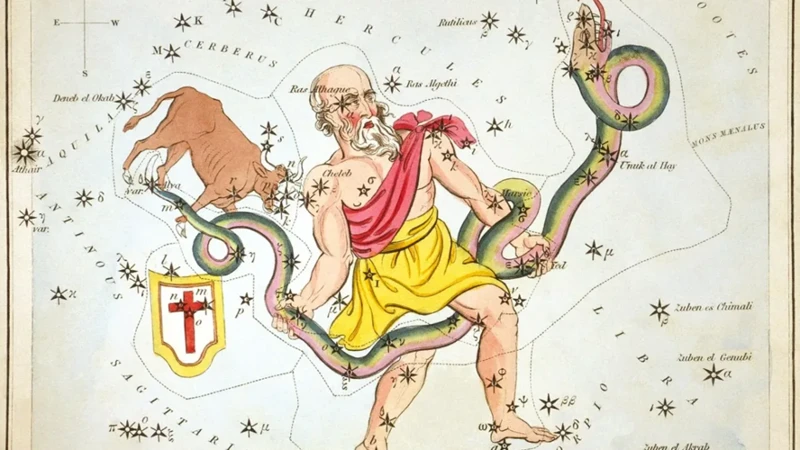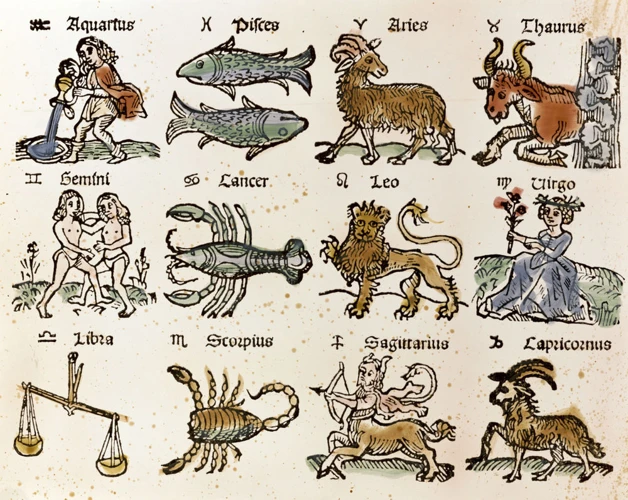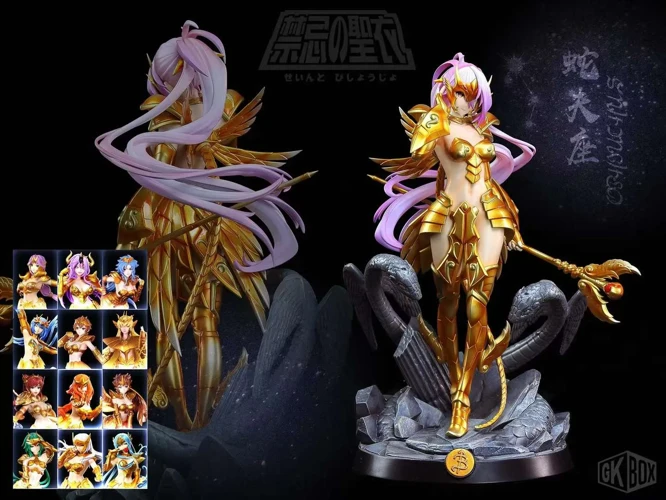Welcome to the enchanting world of Roman mythology, filled with a fascinating array of mythical creatures that have captivated the imagination of people for centuries. Roman mythology, deeply rooted in ancient Roman beliefs and folklore, introduces us to a wide assortment of legendary, divine, and magical beings. From the fearsome guardian of the underworld, Cerberus, to the majestic winged horse, Pegasus, and the mysterious and seductive Siren, join us on a journey as we explore the captivating mythological creatures that have left an indelible mark on Roman culture and continue to inspire awe and wonder to this day.
Contents
- Legendary Creatures
- Divine Creatures
- Magical Creatures
- Conclusion
-
Frequently Asked Questions
- What is the significance of Cerberus in Roman mythology?
- How was Pegasus born in Roman mythology?
- What is the story behind the Minotaur in Roman mythology?
- What does the Griffin represent in Roman mythology?
- Why is Juno’s peacock considered a divine creature in Roman mythology?
- What is the significance of Mars’ wolf in Roman mythology?
- What role do Neptune’s sea serpents play in Roman mythology?
- What are the characteristics of a faun in Roman mythology?
- What is the difference between a faun and a satyr in Roman mythology?
- What is the allure of the Siren in Roman mythology?
- References
-
Frequently Asked Questions
- What are some popular mythological creatures in Roman mythology?
- Are mythological creatures in Roman mythology similar to those in Greek mythology?
- What is the significance of Cerberus in Roman mythology?
- How is Pegasus depicted in Roman mythology?
- What is the story behind the Minotaur in Roman mythology?
- What is the symbolism of the Griffin in Roman mythology?
- What is the role of Juno’s Peacock in Roman mythology?
- What is the significance of Mars’ Wolf in Roman mythology?
- What are Neptune’s Sea Serpents in Roman mythology?
- What are the characteristics of a Faun in Roman mythology?
- References
- Read More
Legendary Creatures

Let us embark on a captivating exploration of the legendary creatures that reside within the realms of Roman mythology. One such awe-inspiring entity is the mighty Cerberus, a three-headed dog guardian who ferociously guards the gates of the underworld. With its menacing appearance and ferocious nature, Cerberus instills fear in the hearts of mortals and serves as a formidable obstacle for those seeking passage into the realm of the dead. Now, turn your attention to the majestic Pegasus, a winged horse of unparalleled beauty and grace. With its magnificent wings and ability to fly, Pegasus has become an enduring symbol of freedom and divine power. Another intriguing creature is the fearsome Minotaur, a half-human, half-bull creature that dwells within the twisting labyrinth of King Minos. Its monstrous presence and insatiable hunger make it a formidable adversary for any who dare to enter the labyrinth. Lastly, we encounter the Griffin, a majestic creature with the body of a lion and the head and wings of an eagle. Revered for its strength and courage, the Griffin serves as a symbol of divine protection and is often associated with powerful deities. These legendary creatures of Roman mythology stir our imagination and fascination, leaving us mesmerized by their legendary tales.
Cerberus
Cerberus, a renowned figure in Roman mythology, is a fearsome creature known as the guardian of the underworld. This monstrous being is depicted as a three-headed dog with a serpent’s tail and a mane made of snakes. His menacing appearance strikes terror into the hearts of mortals and serves as a formidable deterrent to anyone attempting to enter or exit the realm of the dead. Cerberus plays a crucial role in Greek and Roman mythology, as his presence ensures that the souls of the deceased remain within the realm of Hades. Legend has it that Cerberus possesses an insatiable hunger and a ferocious temperament, which adds to his intimidating nature. The many tales surrounding Cerberus often include brave heroes attempting to outsmart or defeat him. However, few have succeeded in their endeavors due to his immense strength and unwavering dedication to his duty. The story of Hercules and his encounter with Cerberus is one of the most famous, showcasing the heroic deeds required to navigate the perilous underworld and ultimately subdue the fearsome creature. Cerberus embodies the very essence of the underworld, representing an impenetrable barrier between the realm of the living and the domain of the dead. His presence serves as a constant reminder of the unyielding power and mysteries that lie beyond our mortal realm.
Pegasus
Pegasus, the iconic winged horse of Roman mythology, has long captivated the hearts and minds of individuals around the world. With its shimmering white coat and majestic wings, Pegasus possesses an ethereal beauty that sets it apart from all other creatures. According to legend, this magnificent steed was born from the blood of the Gorgon Medusa, when Perseus slayed her and allowed her blood to come into contact with the earth. Pegasus holds the unique ability to soar through the skies, effortlessly defying gravity and granting its riders the experience of flight. This enchanting creature often serves as a symbol of inspiration and imagination, representing the unrestricted freedom and boundless possibilities that exist beyond the confines of our earthly existence. Pegasus has been featured prominently in numerous works of art, literature, and poetry, leaving an indelible mark on human culture throughout history. Its association with heroes and gods further solidifies its mythical status and elevates its significance within Roman mythology. Whether depicted as a noble ally to heroes in their quests or as a celestial companion to the gods themselves, Pegasus continues to enchant and inspire us with its timeless allure and fantastical presence. To unravel the mysteries of the zodiac signs and their secrets, consider exploring the fascinating realm of astrology by delving into the unveiling of Zodiac secrets.
Minotaur
Within the realm of Roman mythology, one of the most intriguing creatures is the Minotaur. This fearsome and legendary beast is depicted as a half-human, half-bull creature that dwells within the labyrinth of King Minos on the island of Crete. The Minotaur’s origins stem from the cursed union between King Minos’ wife, Pasiphae, and a majestic bull sent by Poseidon. As a result of this unholy union, the Minotaur was born. With the head of a bull atop a muscular human body, the creature possessed immense strength and an insatiable hunger for human flesh.
Confined within the winding labyrinth, the Minotaur posed a grave threat to all who entered its dark corridors. It devoured countless individuals who were sent as sacrifices by the Athenians, as part of a harrowing tribute imposed by King Minos. Theseus, a valiant hero, volunteered to venture into the labyrinth and slay the Minotaur, thus ending the cycle of sacrifices.
Equipped with a sword and a ball of thread provided by King Minos’ daughter, Ariadne, Theseus successfully navigated the treacherous maze. Following the thread’s path, he confronted the Minotaur in a fierce battle. With bravery and strategic cunning, Theseus managed to defeat the beast, liberating the people from their dreadful fate.
The tale of the Minotaur serves as a cautionary reminder of the consequences of unchecked pride and the labyrinthine complexities of the human psyche. It symbolizes the darker aspects of human nature and the eternal struggle between civilization and primal instincts. The Minotaur continues to be a figure of fascination, embodying both terror and awe in the world of Roman mythology.
(Note: To learn more about the rarest zodiac sign, Ophiuchus, and its traits, click here to explore further.)
Griffin
The Griffin is a majestic and mythical creature, combining the body of a lion with the head and wings of an eagle. In Roman mythology, the Griffin is often associated with divine protection and is revered for its strength and courage. This extraordinary beast symbolizes power and is believed to be a guardian of treasure, protecting it from all who would seek to steal it. The Griffin’s keen eyesight and sharp claws make it an excellent hunter, capable of both terrestrial and aerial pursuits. Its iconic appearance has been depicted in artwork and architecture throughout history, showcasing its significance in Roman culture. The Griffin’s role as a symbol of power and protection can also be seen in various royal emblems and coats of arms. This mythical creature continues to capture the imagination of people around the world, inspiring awe and wonder with its unique characteristics and legendary tales. Learn more about the fascinating mythology of other ancient civilizations like ancient Egypt’s creation myth by visiting /creation-myth-ancient-egypt/.
Divine Creatures

Within the realm of Roman mythology, we delve into the magnificent realm of divine creatures. One such majestic being is Juno’s Peacock, a stunning bird adorned with iridescent feathers that shimmer with vibrant colors. As a symbol of beauty and immortality, the Peacock holds a place of honor within the pantheon of Roman deities. Equally intriguing is Mars’ Wolf, a powerful creature associated with the Roman god of war. This ferocious and loyal animal is often depicted as a companion to Mars, embodying the strength and valor that defines the god of war. We then encounter Neptune’s Sea Serpents, awe-inspiring creatures that rule over the vast depths of the sea. With their serpentine bodies and immense power, they embody the unpredictability and untamed nature of the ocean. These divine creatures of Roman mythology are intrinsically linked to the gods, symbolizing their power, influence, and connection to the natural world. Their presence evokes wonder and awe, reminding us of the immense beauty and mystery that lies within Roman mythology.
Juno’s Peacock
Juno’s Peacock, a majestic and vibrantly colored creature, holds a significant place in Roman mythology. According to ancient tales, this magnificent bird was said to be Juno’s companion and a symbol of her divine power and authority. Known for its resplendent feathers, the peacock represents beauty, regality, and immortality. The shimmering plumage, adorned with hues of iridescent blue and green, radiates a sense of grandeur that is unmatched in the natural world. With every graceful movement, its exquisite feathers catch the light, captivating all who lay their eyes upon them.
In Roman mythology, Juno, the queen of the gods, was often depicted with a peacock by her side, emphasizing her status and commanding presence. The peacock was considered a sacred bird and was believed to have the ability to ward off evil spirits and bring good fortune to those under Juno’s favor. Its distinctive call, a combination of a screech and a melodic cry, was believed to forewarn of impending danger or to announce the arrival of the goddess herself.
The beauty of Juno’s Peacock extends beyond its physical appearance. It symbolizes renewal and immortality, as legend tells of how the peacock’s feathers are believed to retain their dazzling hues even after death, as a testament to Juno’s eternal power. This divine creature has left an indelible mark on Roman culture and continues to be a symbol of beauty, power, and divine protection.
In the realm of Roman mythology, Juno’s Peacock stands as an emblem of grace, elegance, and regality, representing the enduring power and influence of the gods. Its enchanting presence adds depth and intrigue to the rich tapestry of mythological creatures that populate Roman folklore.
Mars’ Wolf
Mars’ Wolf, also known as Lupus Martis in Latin, is a mythical creature deeply associated with the Roman god of war, Mars. As the divine companion of Mars, this powerful wolf embodies the fierce and unyielding nature of the god himself. Legend has it that Mars’ Wolf is no ordinary wolf but a creature of extraordinary size and strength. With its sharp fangs, piercing eyes, and thick fur, Mars’ Wolf strikes fear into the hearts of both mortals and immortals alike. This fearsome creature is said to roam the battlefields, howling with an eerie intensity that echoes across the war-torn landscapes. It is believed that Mars’ Wolf appears during times of conflict and plays a significant role in determining the outcome of battles. With its allegiance to Mars, the wolf represents the unwavering loyalty and military prowess associated with the god of war. Carved into statues and depicted in ancient artwork, Mars’ Wolf stands as a testament to the indomitable spirit of the Roman warriors and the divine power that they sought to harness on the battlefield.
Neptune’s Sea Serpents
Neptune’s Sea Serpents, also known as the “Sea Snakes of Neptune,” are mythical creatures that hold a prominent place in Roman mythology. These serpentine beings are believed to be colossal in size, with scaly bodies that shimmer and glisten in the sunlight. As the children of Neptune, the god of the sea, they possess immense power over the oceanic depths. These sea serpents are said to have the ability to summon storms, control the currents, and cause great waves to rise and fall. Their immense strength and command over the seas make them both feared and respected by sailors and seafarers. According to legends, Neptune’s Sea Serpents are guardians of lost treasures, hidden beneath the ocean’s depths. Sailors who seek to discover these riches must navigate the treacherous waters and face the formidable gaze of these awe-inspiring creatures. It is said that those who approach them with respect and reverence may be bestowed with blessings of safe passage across the vast expanse of Neptune’s realm. The tales of Neptune’s Sea Serpents continue to inspire curiosity and wonder about the mysteries of the deep sea, reminding us of the vastness and power of the ocean, and the mythical creatures that inhabit its depths.
Magical Creatures

Prepare to be enchanted as we delve into the captivating realm of magical creatures within Roman mythology. First, we encounter the mischievous Faun, a creature with the lower body of a goat and the upper body of a human. Known for their love of music and dance, these playful beings often wander the forests and meadows, spreading joy and merriment wherever they go. Next, we encounter the Satyr, a half-human, half-goat creature with a penchant for revelry and indulgence. With their fondness for wine and music, Satyrs are often depicted as lively companions of the woodland gods. Lastly, we come across the mesmerizing Siren, creatures known for their enchanting voices that lure sailors to their doom. With their seductive songs and alluring beauty, the Sirens cast a spell on all who encounter them. These magical creatures of Roman mythology add an extra layer of mystery and enchantment to an already captivating world of gods and legends.
Faun
The Faun is a mystical creature that holds a significant role in Roman mythology. Often depicted as a half-human, half-goat being, the Faun is known for its mischief and mischievous nature. These creatures are associated with the god of nature and wild places, Faunus, and are believed to be guardians of the forest and its inhabitants. With their human-like upper body and goat-like lower body, Fauns possess an innate connection with nature and are often depicted playing musical instruments, such as flutes, symbolizing their harmonious alignment with the natural world. These creatures are known for their lively and playful personalities, often luring unsuspecting travelers deeper into the wilderness with their enchanting music and dance. While they are generally mischievous and playful, they are not considered inherently malicious beings. In fact, many Roman myths tell stories of Fauns providing assistance and guidance to those who show them respect and kindness. The Faun’s presence in Roman mythology adds an element of both mystery and joy, further enriching the tapestry of mythical creatures within this ancient belief system.
Satyr
There is one mythical creature in Roman mythology that is often associated with revelry, mischief, and the untamed forces of nature – the Satyr. Satyrs are depicted as half-human and half-goat, with the upper body resembling that of a human, but with the lower body, including legs, hooves, and a tail, of a goat. These mischievous beings are known for their love of wine, music, and dance, often seen frolicking in the forests and mountains.
Satyrs are commonly portrayed as carefree and playful creatures, embodying the primal instincts and desires of the natural world. They are notorious for their unrestrained behavior and their penchant for pursuing pleasure in all its forms. Satyrs are often depicted as followers of Dionysus, the god of wine and ecstasy, and are considered to be his loyal companions.
In Roman mythology, Satyrs are believed to possess the power to incite madness and frenzy, capable of driving individuals into a state of wild abandon. However, despite their mischievous nature, Satyrs are not inherently malevolent. While they may engage in pranks and mischief, they are also known to possess a certain wisdom and an appreciation for the beauty of the natural world.
Satyrs play a significant role in various myths and legends, adding a touch of whimsy and unpredictability to the stories in which they appear. Their presence often symbolizes the untamed and wild aspects of human nature and serves as a reminder of the importance of balance and moderation in life.
The portrayal of Satyrs in Roman mythology has had a lasting impact on art and literature, with their distinctive characteristics and playful nature inspiring countless depictions in sculptures, paintings, and poems. Through their representation in various artistic mediums, Satyrs continue to captivate and intrigue, embodying the duality of the human spirit and our connection to the natural world.
Siren
The Sirens, mesmerizing and enchanting beings of Roman mythology, are creatures that dwell near the treacherous shores and rocky cliffs, luring unsuspecting sailors with their enchanting voices. These half-bird, half-woman creatures possess a hauntingly beautiful allure that has the power to captivate even the most steadfast seafarers. Legends speak of their irresistible singing voices, capable of compelling sailors to abandon their ships and seek the source of the captivating melody. The Sirens, cunning and devious, were known for their ability to manipulate and deceive sailors, leading them to their demise on the treacherous rocks and rocky islands that inhabited their domains. Sailors, entranced by the bewitching songs, would soon find themselves shipwrecked and at the mercy of these alluring creatures. The Sirens’ haunting melodies were said to possess an otherworldly quality, carrying an air of melancholy and temptation that could not be resisted. Some tales suggest that a Siren’s song could foretell the future or grant knowledge and wisdom to those who could withstand their enchantment. However, those who fell victim to their allure would find their fates sealed, destined to be immobilized by the Sirens’ captivating magic. The legends of the Sirens continue to be passed down through generations, a reminder of the dangers that exist when one is enticed by the alluring and seductive forces of temptation.
Conclusion

In conclusion, the mythological creatures in Roman mythology are a testament to the rich and intricate tapestry of ancient Roman culture. These creatures, both legendary and divine, have captured the imaginations of people throughout history, transcending time and cultural boundaries. From the fierce and awe-inspiring Cerberus guarding the gates of the underworld, to the graceful and majestic Pegasus soaring through the heavens, each creature possesses its own unique qualities and significance. These mythical beings serve as powerful symbols, representing various aspects of human existence and the mysteries of the world. Whether they inspire awe, fear, or wonder, the mythological creatures of Roman mythology continue to fascinate and intrigue both scholars and enthusiasts alike. Their stories and symbolism endure, reminding us of the enduring power of myth and the timeless allure of fantastical creatures. As we delve into the captivating world of Roman mythology, we are transported to a realm where imagination knows no bounds, and where these mythical creatures continue to ignite our curiosity and ignite our sense of wonder.
Frequently Asked Questions

What is the significance of Cerberus in Roman mythology?
Cerberus symbolizes the guardian of the underworld, serving as a fearsome creature that prevents the souls of the dead from escaping.
How was Pegasus born in Roman mythology?
Pegasus was born from the blood of the slain Medusa, a Gorgon with snakes for hair, when the hero Perseus beheaded her.
What is the story behind the Minotaur in Roman mythology?
In Roman mythology, the Minotaur was born from the union of Queen Pasiphae and a majestic white bull sent by Neptune as punishment for King Minos’ betrayal.
What does the Griffin represent in Roman mythology?
The Griffin is a symbol of strength, courage, and divine protection. It is often associated with both solar themes and deities, serving as a powerful emblem.
Why is Juno’s peacock considered a divine creature in Roman mythology?
Juno’s peacock is considered divine due to its associations with the goddess Juno, who was the queen of the gods and a powerful figure in Roman mythology.
What is the significance of Mars’ wolf in Roman mythology?
Mars’ wolf, also known as the Capitoline Wolf, is a legendary creature that symbolizes the founding of Rome and the nurturing and protection of its founders, Romulus and Remus.
What role do Neptune’s sea serpents play in Roman mythology?
Neptune’s sea serpents are magnificent creatures that embody the power and dominance of the sea. They are often depicted pulling his chariot and are associated with the mighty god of the sea himself.
What are the characteristics of a faun in Roman mythology?
Fauns are playful, mischievous half-human, half-goat creatures known for their love of music, dance, and wild revelry. They are often associated with nature and fertility.
What is the difference between a faun and a satyr in Roman mythology?
In Roman mythology, fauns are peaceful, gentle creatures, while satyrs are more lustful and wild. Satyrs are often depicted with goat-like features, including horns and goat legs.
What is the allure of the Siren in Roman mythology?
Sirens are captivating and alluring creatures, known for their enchanting voices that lure sailors to their doom. They represent the irresistible temptations and dangers that exist in the world.
References
Frequently Asked Questions

What are some popular mythological creatures in Roman mythology?
Some popular mythological creatures in Roman mythology include Cerberus, Pegasus, Minotaur, Griffin, Faun, Satyr, and Siren.
Are mythological creatures in Roman mythology similar to those in Greek mythology?
Yes, there are many similarities between the mythological creatures in Roman mythology and those in Greek mythology. The Romans often adopted and adapted the Greek myths and creatures, giving them their own unique interpretations.
What is the significance of Cerberus in Roman mythology?
Cerberus is a three-headed dog who guards the gates of the underworld in Roman mythology. He symbolizes the boundary between the living world and the realm of the dead.
How is Pegasus depicted in Roman mythology?
Pegasus is a winged horse in Roman mythology. He is often depicted as a majestic white horse with wings, representing freedom and the power of flight.
What is the story behind the Minotaur in Roman mythology?
The Minotaur is a creature with the head of a bull and the body of a man. According to Roman mythology, he was imprisoned in a labyrinth on the island of Crete and was eventually killed by the hero Theseus.
What is the symbolism of the Griffin in Roman mythology?
The Griffin is a creature with the body of a lion and the head and wings of an eagle. In Roman mythology, it is often associated with guardianship and protection. The Griffin is considered a powerful and noble creature.
What is the role of Juno’s Peacock in Roman mythology?
In Roman mythology, Juno’s Peacock is a symbol of beauty and immortality. Juno, the queen of the gods, is often depicted with a peacock by her side, showcasing her regal and divine status.
What is the significance of Mars’ Wolf in Roman mythology?
Mars’ Wolf is a legendary creature in Roman mythology associated with the god of war, Mars. The wolf is a symbol of strength and aggression, representing the ferocity and power of Mars in battle.
What are Neptune’s Sea Serpents in Roman mythology?
In Roman mythology, Neptune’s Sea Serpents are giant serpentine creatures that inhabit the oceans and seas. They are often depicted as powerful and fearsome creatures, representing the vastness and mystery of the sea.
What are the characteristics of a Faun in Roman mythology?
A Faun is a creature with the body of a human and the legs and horns of a goat. In Roman mythology, they are associated with nature, fertility, and wildness. Fauns are often depicted as mischievous and playful.







